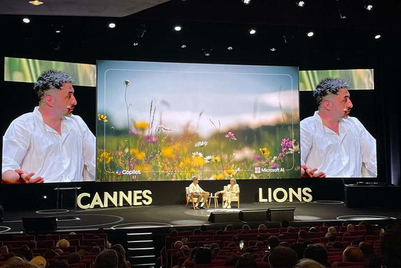
China's advertising clutter quotient has shot up to such an extent
that huge sectors of its population are showing classic symptoms of
advertising fatigue.
A Zenith Media study uncovered some startling truths about the Chinese
consumer - 52 per cent of respondents in Beijing and Shanghai now pay
little or no attention to television commercials in sharp contrast to
attitudes 10 years ago when TVCs were seen as something new and
novel.
Few advertisers had expected to see the problem crop up this early in
China. Advertising fatigue is an issue associated with more developed
Western markets.
However, the emergence of advertising fatigue in so short a period of
time demonstrates that China's rapid economic development over the past
15 years has accelerated the rise of consumerism. And with it, a more
sophisticated audience, who demand fresh and novel advertising.
In a market suffering from over-capacity in just about every category,
this latest insight will turn up the heat on marketers. They will now
need to stay ahead in advertising and constantly refresh their
brands.
Against this backdrop, product placements within TV shows and programme
sponsorships have gained in popularity as advertisers struggle to break
out of the rut. The Zenith survey found that these new approaches
increased brand awareness significantly, however it cautioned that their
use should be considered in the context of the whole strategy. For
instance, the research shows that product placement alone will not spark
strong ad recall.
The secret to success lies in striking the right combination of such
options and the placement of conventional TVCs within certain
programmes.
Zoe Tan, Zenith China's director of strategic resources, says: "Product
placement or title sponsorship exerts impact only when it is supported
by regular commercial breaks, while the choice of the right programme
for the right product is also a key to success."
Product sponsorships are becoming increasingly popular to the point
where some TV shows are cluttered with multiple brands jostling for
audience attention.
Depending on the popularity of a show and the number of TV stations it
is syndicated to, title sponsorship can cost from three to 15 million
Rmb for a weekly show. Despite its rising popularity and costs, little
has been done, until now, to shed light on the effectiveness of
sponsorship deals.
While TV is still considered the most effective way of reaching the mass
audience, TV station rates have rocketed in recent years, prompting
advertisers to move into less measurable advertising areas. The Zenith
Media research report makes a first attempt to examine how effective the
new television advertising forms are and how clients can make best use
of the tools.
"Title sponsorship can very effectively increase brand recall, however
research also shows that title sponsorship is most effective during the
mid life cycle of a product and not at the beginning of a product life
cycle unless it is supported by a TV commercial," explains Tan.


.jpg&h=334&w=500&q=100&v=20250320&c=1)


.png&h=334&w=500&q=100&v=20250320&c=1)




.png&h=334&w=500&q=100&v=20250320&c=1)

.png&h=268&w=401&q=100&v=20250320&c=1)


